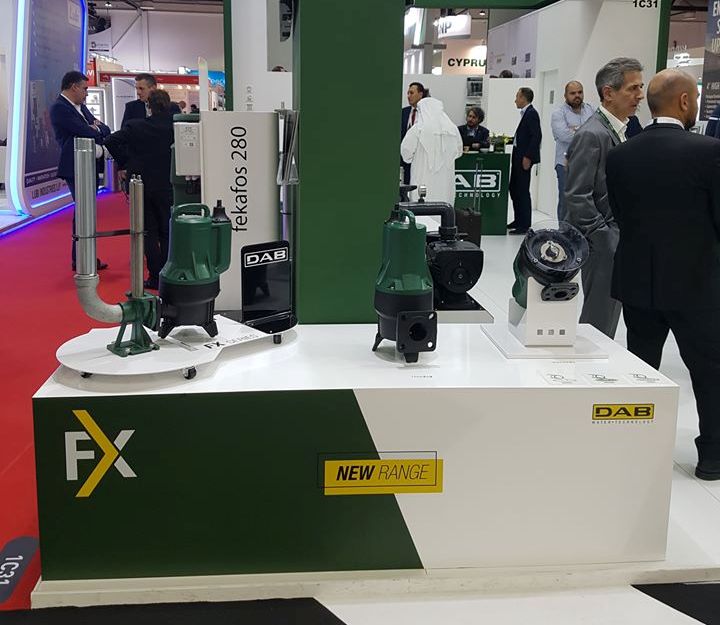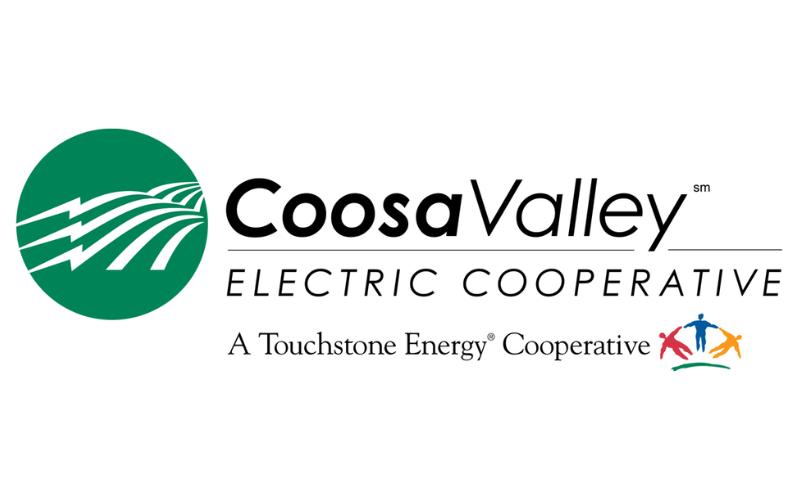Cold Storage Technology: Preserving the Future
Cold storage technology plays a crucial role in modern society, ensuring the safe and efficient preservation of perishable goods. From pharmaceuticals to food, the ability to maintain optimal temperatures is […]
Cold storage technology plays a crucial role in modern society, ensuring the safe and efficient preservation of perishable goods. From pharmaceuticals to food, the ability to maintain optimal temperatures is essential for maintaining quality, extending shelf life, and preventing spoilage.
The history of cold storage dates back centuries, with early methods involving the use of ice and natural refrigeration. However, the development of mechanical refrigeration in the late 19th century revolutionized the industry, paving the way for large-scale cold storage facilities and the emergence of complex cold chain management systems.
Introduction to Cold Storage Technology
Cold storage technology plays a crucial role in preserving perishable goods, ensuring food security, and facilitating global trade. It involves maintaining a controlled low-temperature environment to extend the shelf life of products, minimizing spoilage and waste.
Cold storage technology is essential for maintaining the quality and safety of perishable goods, including fruits, vegetables, meat, dairy products, and pharmaceuticals. It prevents spoilage caused by bacterial growth, enzymatic activity, and other factors that degrade the quality of products.
History and Evolution of Cold Storage Technology
Cold storage technology has evolved significantly over the centuries. Early methods involved using natural ice harvested during winter and storing it in insulated structures for later use. The invention of mechanical refrigeration in the late 19th century revolutionized cold storage, enabling the controlled maintenance of low temperatures throughout the year.
The early 20th century saw the development of large-scale cold storage facilities, primarily for storing agricultural products. Advancements in refrigeration technology, including the use of ammonia and Freon refrigerants, led to improved efficiency and lower operating costs. The introduction of computer-controlled systems further enhanced the precision and reliability of cold storage operations.
Types of Cold Storage Facilities, Cold storage technology
Cold storage facilities can be categorized based on their temperature range and the type of products they store. The most common types include:
- Refrigerated Warehouses: These facilities maintain temperatures between 32°F (0°C) and 41°F (5°C) and are typically used for storing fruits, vegetables, and other perishable goods.
- Frozen Warehouses: These facilities maintain temperatures below 0°F (-18°C) and are used for storing frozen foods, meat, seafood, and other products that require deep freezing.
- Controlled Atmosphere (CA) Storage: CA storage facilities regulate the atmosphere inside the storage area by controlling oxygen, carbon dioxide, and nitrogen levels. This method helps to slow down the respiration process of fruits and vegetables, extending their shelf life.
- Cold Chain Logistics: Cold chain logistics involves the transportation and storage of temperature-sensitive products under controlled conditions. It encompasses all aspects of the supply chain, from production to distribution and consumption.
Principles of Cold Storage
Cold storage facilities rely on fundamental principles of refrigeration and temperature control to maintain the desired conditions for preserving perishable goods. These principles are essential for ensuring the quality, safety, and extended shelf life of stored products.
Refrigeration and Temperature Control
Refrigeration is the process of removing heat from a space or object to lower its temperature. This is achieved by using a refrigeration cycle, which involves a refrigerant that absorbs heat from the cold storage space and releases it to the outside environment. The temperature control system within a cold storage facility ensures that the desired temperature is maintained throughout the storage area.
Role of Insulation and Thermal Barriers
Insulation plays a crucial role in cold storage by minimizing heat transfer between the storage space and the surrounding environment. Thermal barriers, such as walls, ceilings, and doors, are designed to resist heat flow. The effectiveness of insulation is measured by its R-value, which indicates its resistance to heat transfer. Higher R-values indicate better insulation.
Types of Refrigeration Systems
Cold storage facilities utilize various types of refrigeration systems, each with its advantages and disadvantages.
- Vapor-Compression Refrigeration System: This is the most common type of refrigeration system used in cold storage. It uses a refrigerant to absorb heat from the storage space and release it to the outside environment. The system consists of a compressor, condenser, expansion valve, and evaporator.
- Absorption Refrigeration System: This system uses a solution, such as water and lithium bromide, to absorb heat and release it to the outside environment. It is typically used in applications where there is a readily available heat source, such as industrial processes or solar energy.
- Air Refrigeration System: This system uses air as the refrigerant. It is commonly used in large cold storage facilities where the air is circulated throughout the storage space to maintain a consistent temperature.
Cold Storage Applications: Cold Storage Technology
Cold storage technology is crucial for preserving perishable goods and ensuring their quality and safety throughout the supply chain. Its applications extend across numerous industries, playing a vital role in maintaining the freshness, taste, and nutritional value of various products.
Food and Beverage Industry
Cold storage plays a critical role in the food and beverage industry, ensuring the preservation of perishable goods from farm to table. It provides a controlled environment to maintain optimal temperature and humidity levels, preventing spoilage and extending the shelf life of products.
- Fresh Produce: Cold storage facilities are essential for storing fruits, vegetables, and other fresh produce, minimizing spoilage and maintaining their quality.
- Meat and Poultry: Cold storage facilities maintain the freshness and safety of meat and poultry products, preventing bacterial growth and extending their shelf life.
- Dairy Products: Cold storage is essential for preserving the quality and safety of milk, cheese, yogurt, and other dairy products, ensuring their freshness and preventing spoilage.
- Seafood: Cold storage facilities maintain the freshness and quality of seafood, preventing spoilage and ensuring its safety for consumption.
- Frozen Foods: Cold storage facilities are used for storing frozen foods, including vegetables, fruits, meats, and ready-to-eat meals, preserving their quality and extending their shelf life.
Pharmaceutical Industry
Cold storage is essential for the pharmaceutical industry, ensuring the efficacy and safety of temperature-sensitive medications, vaccines, and other pharmaceutical products. It maintains optimal temperature and humidity levels, preventing degradation and ensuring the effectiveness of these critical products.
- Vaccines: Cold storage facilities are crucial for storing vaccines, ensuring their potency and effectiveness.
- Insulin and Other Medications: Many medications, particularly those used for treating chronic conditions, require cold storage to maintain their efficacy and safety.
- Clinical Trials: Cold storage facilities are used to store samples and materials used in clinical trials, ensuring their integrity and validity.
Retail Industry
Cold storage facilities support the retail industry by providing a reliable source of fresh and frozen goods for supermarkets, convenience stores, and other retailers. They ensure the availability of a wide range of products, meeting consumer demand for fresh and high-quality goods.
- Supermarkets: Cold storage facilities supply supermarkets with fresh produce, meat, poultry, dairy products, and frozen foods, ensuring a consistent supply of these essential items.
- Convenience Stores: Cold storage facilities provide convenience stores with a limited selection of fresh and frozen goods, catering to the needs of busy consumers.
- Restaurants: Cold storage facilities supply restaurants with fresh ingredients, ensuring the quality and freshness of their dishes.
Other Industries
Cold storage technology finds applications in various other industries, including:
- Agriculture: Cold storage facilities are used to store seeds, grains, and other agricultural products, preserving their quality and extending their shelf life.
- Research and Development: Cold storage facilities are used to store biological samples, cell lines, and other research materials, ensuring their integrity and viability.
- Disaster Relief: Cold storage facilities can be used to store emergency supplies, such as food, water, and medical supplies, in the event of natural disasters.
Types of Cold Storage Facilities
Cold storage facilities are classified based on the temperature range they maintain, which directly impacts the types of products they can store. The design and functionalities of these facilities are tailored to meet the specific requirements of the stored goods, ensuring their quality and safety.
Temperature Ranges and Facility Types
The following table Artikels the primary temperature ranges and corresponding cold storage facility types:
| Temperature Range (°C) | Facility Type | Applications |
|---|---|---|
| -18°C to -25°C | Frozen Storage | Meat, poultry, seafood, fruits, vegetables, ice cream, pharmaceuticals |
| 0°C to 7°C | Chilled Storage | Dairy products, fresh produce, meat, poultry, seafood, flowers |
| 12°C to 15°C | Controlled Atmosphere Storage | Fruits, vegetables, potatoes |
Frozen Storage
Frozen storage facilities maintain temperatures below -18°C, suitable for long-term preservation of various products. These facilities typically employ specialized refrigeration systems, often using ammonia or CO2 as refrigerants.
Design Features
– Insulated Walls and Ceilings: Thick insulation minimizes heat transfer, ensuring consistent low temperatures.
– Air Circulation Systems: Forced air circulation helps maintain uniform temperatures and prevent frost buildup.
– Temperature Monitoring Systems: Continuous monitoring and alarms ensure temperature integrity.
– High-Capacity Refrigeration Units: Powerful refrigeration systems handle the large cooling load.
– Pallet Racking Systems: Efficient storage and retrieval of frozen goods.
Functionalities
– Product Preservation: Frozen storage extends the shelf life of perishable goods, preventing spoilage.
– Quality Control: Consistent low temperatures ensure product quality and safety.
– Inventory Management: Efficient storage and retrieval systems facilitate inventory control.
Chilled Storage
Chilled storage facilities maintain temperatures between 0°C and 7°C, ideal for storing products that require a cool environment but not freezing.
Design Features
– Insulated Walls and Ceilings: Insulation reduces heat transfer, maintaining optimal temperatures.
– Air Circulation Systems: Air circulation systems ensure even temperature distribution and prevent moisture buildup.
– Humidity Control Systems: Maintaining optimal humidity levels is crucial for certain products, like fresh produce.
– Refrigeration Systems: Refrigeration systems are designed to maintain chilled temperatures.
– Pallet Racking Systems: Efficient storage and retrieval of chilled goods.
Functionalities
– Product Freshness: Chilled storage extends the shelf life of perishable goods, preserving freshness.
– Quality Control: Controlled temperatures and humidity levels maintain product quality.
– Inventory Management: Efficient storage and retrieval systems optimize inventory management.
Controlled Atmosphere Storage
Controlled atmosphere storage facilities utilize a modified atmosphere to extend the shelf life of fruits and vegetables. This involves reducing oxygen levels and increasing carbon dioxide and nitrogen levels, slowing down respiration and ripening processes.
Design Features
– Gas-Tight Storage Chambers: Sealed chambers prevent gas exchange with the external environment.
– Gas Monitoring Systems: Continuous monitoring of gas levels ensures optimal storage conditions.
– Gas Control Systems: Systems regulate gas levels to maintain the desired atmosphere.
– Refrigeration Systems: Refrigeration systems maintain the required temperature range.
– Pallet Racking Systems: Efficient storage and retrieval of produce.
Functionalities
– Extended Shelf Life: Controlled atmosphere slows down ripening and decay, extending the shelf life of produce.
– Quality Preservation: Controlled atmosphere helps maintain the quality, color, and texture of produce.
– Reduced Waste: By extending shelf life, controlled atmosphere storage reduces food waste.
Cold Storage Equipment and Technology

Cold storage facilities rely on a sophisticated array of equipment to maintain the desired temperature and humidity levels for preserving perishable goods. This section explores the key components and emerging technologies that play a crucial role in efficient cold storage operations.
Refrigeration Units
Refrigeration units are the heart of cold storage facilities, responsible for extracting heat from the storage space and maintaining the required temperature. The primary components of a refrigeration unit include:
- Compressor: The compressor is the driving force of the refrigeration system. It compresses the refrigerant gas, increasing its temperature and pressure.
- Condenser: The condenser cools the compressed refrigerant gas, causing it to condense into a liquid state.
- Expansion Valve: The expansion valve controls the flow of the refrigerant liquid into the evaporator.
- Evaporator: The evaporator absorbs heat from the storage space, causing the refrigerant liquid to evaporate and become a gas.
Compressors
Compressors are essential for circulating the refrigerant gas within the refrigeration system. Different types of compressors are used in cold storage facilities, each with its own advantages and disadvantages:
- Reciprocating Compressors: These compressors are relatively simple and inexpensive but can be noisy and have a limited lifespan.
- Rotary Compressors: Rotary compressors are more efficient and quieter than reciprocating compressors but are also more expensive.
- Screw Compressors: Screw compressors are ideal for large-scale cold storage facilities due to their high capacity and efficiency.
Fans
Fans play a crucial role in circulating air within the cold storage space, ensuring even temperature distribution and preventing the formation of condensation.
- Ceiling Fans: Ceiling fans are commonly used in cold storage facilities to create a gentle airflow, preventing temperature stratification.
- Evaporator Fans: Evaporator fans are mounted within the evaporator unit to facilitate the heat transfer process.
Automated Storage and Retrieval Systems (ASRS)
Automated storage and retrieval systems (ASRS) are becoming increasingly popular in modern cold storage facilities. ASRS utilize automated guided vehicles (AGVs) or robotic arms to move pallets and other storage units within the facility. This automation streamlines the storage and retrieval process, reducing labor costs and improving efficiency.
- Benefits of ASRS: ASRS offer several advantages, including increased storage capacity, improved accuracy, reduced labor costs, and enhanced safety.
- Examples: ASRS are commonly used in large-scale distribution centers and cold storage facilities for storing frozen foods, pharmaceuticals, and other temperature-sensitive products.
Sensors and Data Analytics
Sensors and data analytics are playing an increasingly important role in modern cold storage operations. Sensors are deployed throughout the facility to monitor temperature, humidity, and other critical parameters.
- Real-Time Monitoring: Sensors provide real-time data that can be used to identify potential problems and optimize storage conditions.
- Data Analytics: Data analytics software can analyze the sensor data to identify trends, predict future needs, and improve operational efficiency.
- Predictive Maintenance: Data analytics can also be used for predictive maintenance, helping to prevent equipment failures and minimize downtime.
Cold Chain Management
The cold chain refers to the temperature-controlled supply chain that ensures the safe and high-quality transportation, storage, and distribution of perishable goods, such as food, pharmaceuticals, and other temperature-sensitive products. Maintaining a consistent temperature throughout the cold chain is crucial for preserving product quality, extending shelf life, and minimizing spoilage.
Cold chain management involves a comprehensive system that integrates various elements to maintain the desired temperature range and prevent product deterioration. Effective cold chain management is essential for businesses in various industries, particularly those dealing with perishable goods, as it directly impacts product quality, consumer safety, and overall profitability.
Key Elements of Cold Chain Management
A successful cold chain management system relies on a combination of factors that work in harmony to ensure the integrity of the cold chain. These key elements include:
- Temperature Monitoring and Control: Continuous monitoring and control of temperature throughout the cold chain is paramount. This involves using sensors, data loggers, and other monitoring devices to track temperature fluctuations and ensure adherence to predefined temperature ranges.
- Packaging and Transportation: Proper packaging plays a crucial role in maintaining the cold chain. Insulated packaging materials, such as styrofoam boxes or thermal blankets, help to insulate products and prevent temperature fluctuations during transportation.
- Cold Storage Facilities: Cold storage facilities, including warehouses, distribution centers, and refrigerated trucks, provide controlled temperature environments for storing and transporting perishable goods. These facilities must be equipped with refrigeration systems and monitoring systems to maintain the desired temperature.
- Inventory Management: Efficient inventory management is essential for minimizing product loss due to spoilage or expiration. This involves tracking product inventory, ensuring proper stock rotation, and implementing first-in, first-out (FIFO) inventory management practices.
- Personnel Training: Proper training of personnel involved in handling perishable goods is crucial. Employees should be trained on proper handling techniques, temperature monitoring procedures, and safety protocols to prevent product contamination or temperature breaches.
Traceability and Monitoring
Traceability and monitoring are critical aspects of cold chain management, enabling businesses to track product movement, identify potential temperature breaches, and ensure product safety. Traceability systems allow businesses to track the history of a product from its origin to its final destination, providing valuable insights into its temperature profile.
Cold storage technology is a vital part of the food supply chain, ensuring that perishable goods remain fresh and safe for consumption. It’s fascinating to see how advancements in this field are impacting our lives, and the latest developments are explored in detail in the technology in action 18th edition.
From automated warehouse systems to innovative refrigeration techniques, this book provides insights into the future of cold storage technology and its role in ensuring a sustainable food system.
- Data Logging and Recording: Data loggers and other monitoring devices capture real-time temperature data throughout the cold chain. This data is crucial for identifying temperature deviations, investigating potential breaches, and ensuring product quality.
- Real-Time Monitoring and Alerts: Advanced monitoring systems provide real-time temperature data and alerts, allowing businesses to respond promptly to any temperature deviations. This proactive approach helps prevent product spoilage and ensures product safety.
- Auditing and Verification: Regular audits and verification procedures are essential to ensure compliance with cold chain regulations and maintain the integrity of the system. These audits involve reviewing temperature data, inspecting facilities, and assessing personnel training.
Environmental Considerations
Cold storage facilities play a vital role in the global food supply chain, but they also have a significant environmental impact. The energy required to maintain low temperatures and the refrigerants used in these facilities contribute to greenhouse gas emissions and climate change. However, with the growing awareness of environmental sustainability, the cold storage industry is increasingly adopting energy-efficient technologies and sustainable practices to minimize its environmental footprint.
Energy Efficiency and Sustainable Practices
Energy efficiency is crucial for reducing the environmental impact of cold storage facilities. Implementing energy-efficient technologies and practices can significantly lower energy consumption and greenhouse gas emissions.
- Insulation: Proper insulation helps maintain the desired temperature inside the facility, reducing the energy required for cooling. High-performance insulation materials, such as polyurethane foam or vacuum insulation panels, can significantly improve energy efficiency.
- Refrigeration Systems: Modern refrigeration systems, such as variable-speed compressors and cascade refrigeration systems, offer improved energy efficiency compared to older technologies. Utilizing natural refrigerants, like ammonia or CO2, can also reduce greenhouse gas emissions.
- LED Lighting: Replacing traditional lighting with energy-efficient LED lights can significantly reduce energy consumption. LED lights consume less power and last longer, further reducing the environmental impact.
- Building Design: The design of cold storage facilities plays a crucial role in energy efficiency. Optimizing building orientation, incorporating natural ventilation, and using daylighting strategies can reduce energy consumption.
- Process Optimization: Implementing efficient loading and unloading practices, minimizing door openings, and optimizing product storage can reduce energy loss and improve overall efficiency.
- Renewable Energy Sources: Utilizing renewable energy sources, such as solar panels or wind turbines, can significantly reduce reliance on fossil fuels and minimize greenhouse gas emissions.
Emerging Technologies and Strategies
Emerging technologies and strategies are continuously being developed to further reduce the carbon footprint of cold storage facilities.
- Advanced Refrigeration Systems: Innovative refrigeration systems, such as magnetic refrigeration and thermoacoustic refrigeration, offer the potential for higher energy efficiency and reduced environmental impact.
- Smart Control Systems: Implementing smart control systems that optimize refrigeration system performance based on real-time data can significantly reduce energy consumption.
- Refrigerant Management: Advanced refrigerant management systems can minimize refrigerant leaks and improve overall efficiency, reducing greenhouse gas emissions.
- Data Analytics and Optimization: Utilizing data analytics to monitor energy consumption, identify inefficiencies, and optimize operations can lead to significant energy savings.
- Sustainable Building Materials: Incorporating sustainable building materials, such as recycled materials or bio-based materials, can reduce the environmental impact of construction and operation.
Future Trends in Cold Storage
The cold storage industry is undergoing a significant transformation, driven by technological advancements, evolving consumer preferences, and the increasing demand for fresh and safe food. This section explores key trends shaping the future of cold storage technology, examining the impact of automation, robotics, and artificial intelligence, and highlighting emerging innovations in refrigeration and cold storage.
Automation, Robotics, and Artificial Intelligence
Automation, robotics, and artificial intelligence (AI) are playing a pivotal role in modernizing cold storage operations. These technologies are enhancing efficiency, optimizing resource utilization, and improving safety.
- Automated Guided Vehicles (AGVs) and Autonomous Mobile Robots (AMRs): AGVs and AMRs are transforming warehouse logistics by automating material handling tasks. These robots navigate warehouse environments autonomously, transporting goods between storage locations and loading docks, reducing labor costs and improving efficiency. For example, Amazon utilizes AMRs in its fulfillment centers, automating tasks like picking and packing, and streamlining warehouse operations.
- Robotics for Picking and Packing: Robotic arms equipped with advanced sensors and AI algorithms are being deployed for picking and packing tasks in cold storage facilities. These robots can handle delicate items, ensure accuracy, and operate in challenging environments, enhancing productivity and reducing human error. For instance, companies like RightHand Robotics and Fetch Robotics are developing robotic solutions for picking and packing in cold storage warehouses.
- AI-Powered Predictive Maintenance: AI algorithms can analyze data from sensors and equipment, predicting potential maintenance issues before they occur. This proactive approach helps prevent equipment failures, minimizes downtime, and reduces operational costs. For example, companies like Siemens and ABB are using AI for predictive maintenance in industrial applications, including cold storage facilities.
Ultimate Conclusion
As the world continues to face challenges related to food security, population growth, and climate change, cold storage technology is poised to play an even more vital role in the future. Innovations in automation, robotics, and energy efficiency are driving advancements that will optimize cold storage operations, reduce environmental impact, and ensure the sustainable preservation of essential goods.








